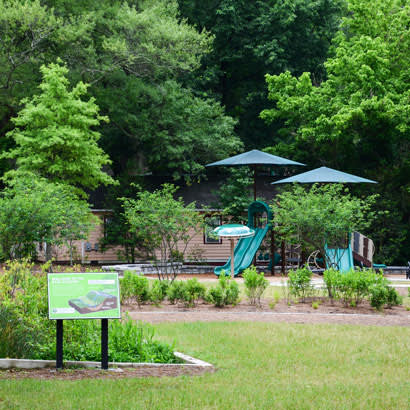Green Gentrification
Green revitalization projects—such as parks, community gardens, and other green spaces—improve the social and environmental aspects of neighborhoods by reducing pollution in the air, creating more space for exercise and physical fitness, and providing a place for residents to socialize, all of which can lead to improvements in residents’ health.
Despite these benefits, a pressing concern of the struggle for environmental justice with many green revitalization programs is their tendency to contribute to “green gentrification”.[1] In general, attempts to revitalize a low-income neighborhood can cause home prices there to increase, making it more expensive to continue living in the area, especially for those renting in the neighborhood. This is heavily correlated with low-income renters moving out of the neighborhood en masse due to an increase in rent and property-related expenses; this phenomenon, known as “gentrification,” disproportionately affects minority groups.[2],[3] When this process occurs because of the addition of parks and community gardens, it is sometimes referred to as “green gentrification.”[4]
Addressing the Problem
The National Recreation and Parks Association suggests mitigating the risk of gentrification while still maintaining the goal of building green spaces via the following tenets of community-driven green revitalization[5]:

First, these projects will prioritize co-benefits for neighborhood residents.[6] These co-benefits might include: improving climate, soil, and groundwater conditions; creating local jobs; and providing spaces for community gathering and recreation. In order for these co-benefits to be properly addressed with the approval of the community, residents, who would be most familiar with the community’s priorities and needs, will be engaged in the planning process, either by participating in surveys to be reviewed by government leaders and officials or discussing with renovation leaders and management groups.
Second, the park investment will be coordinated with other community plans, such as those addressing affordable housing, economic development, and transportation. This concern is particularly important to address the potential for gentrification, as it emphasizes the relief of financial pressures on low-income tenants, along with the increase of economic opportunity for residents. This concern also stresses the importance of the first anchor so that project managers and government leaders can manage the costs efficiently for the improvements in the neighborhood while still providing the co-benefits for the residents.
According to the National Recreation and Parks Association, the tenets tend to result in projects that are smaller in scale and more unconventional, such as “neighborhood parks, community gardens, greening of vacant lots, and green alleys”.[8] The group’s proposed method of using abandoned buildings would follow this trend, potentially making it ideal for adding green spaces to low-income neighborhoods.
Negative Effects of Abandoned Buildings
Environmental justice activism is very important in communities with abandoned and vacant buildings because of the consequences that result from lack of project implementation. Specifically, not addressing abandoned and vacant buildings can cost local governments millions of dollars annually. For example, the city of Philadelphia has faced $20 million of costs towards projects addressing abandoned and vacant buildings each year.[9] These costs go to maintaining the properties, repairing vandalized areas, and addressing other circumstances surrounding the buildings, such as fires. Fires frequently occur in abandoned and vacant buildings, damaging property and causing tens of deaths and hundreds of injuries annually. With these problems to address, local governments are forced to cut down their spending on other budget categories like community projects and schools.[10] Because these cuts can have negative social impacts on the community, addressing abandoned and vacant buildings is an integral part of environmental justice activism.
In short, green revitalization projects on neighborhoods can result in “green gentrification”, which negatively affects certain residents by raising the costs of living in the area. To combat this risk, there should be greater emphasis on fostering community engagement and maximizing the environmental and social benefits that come with these revitalization projects.
